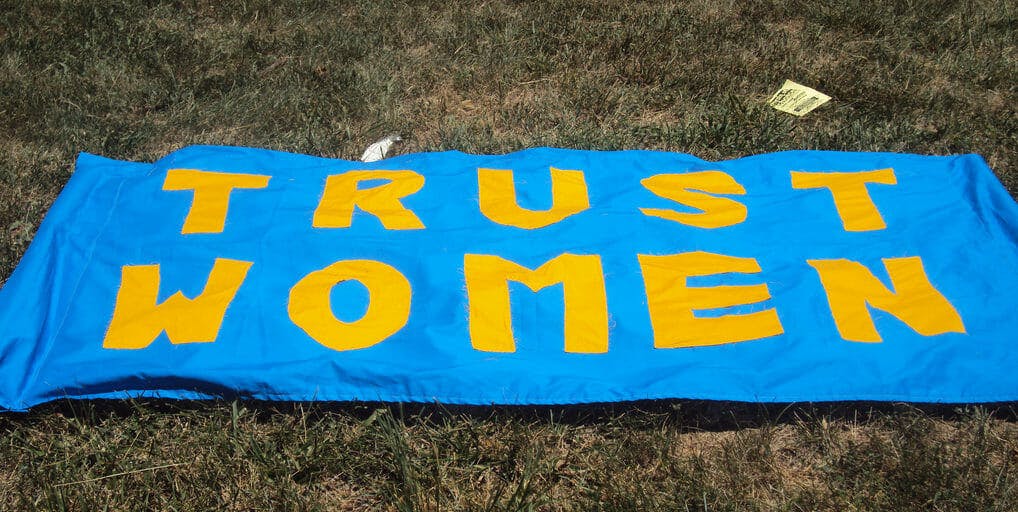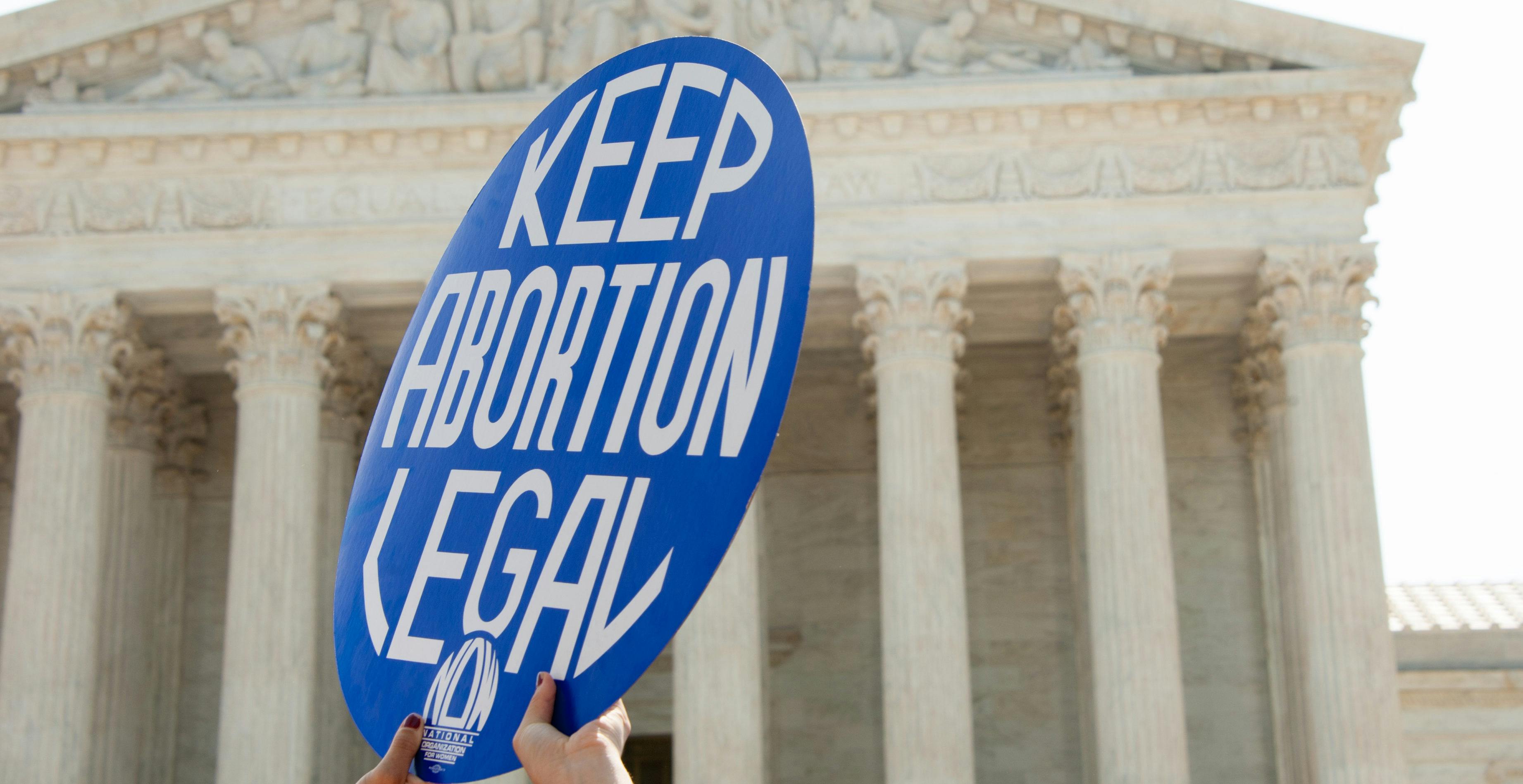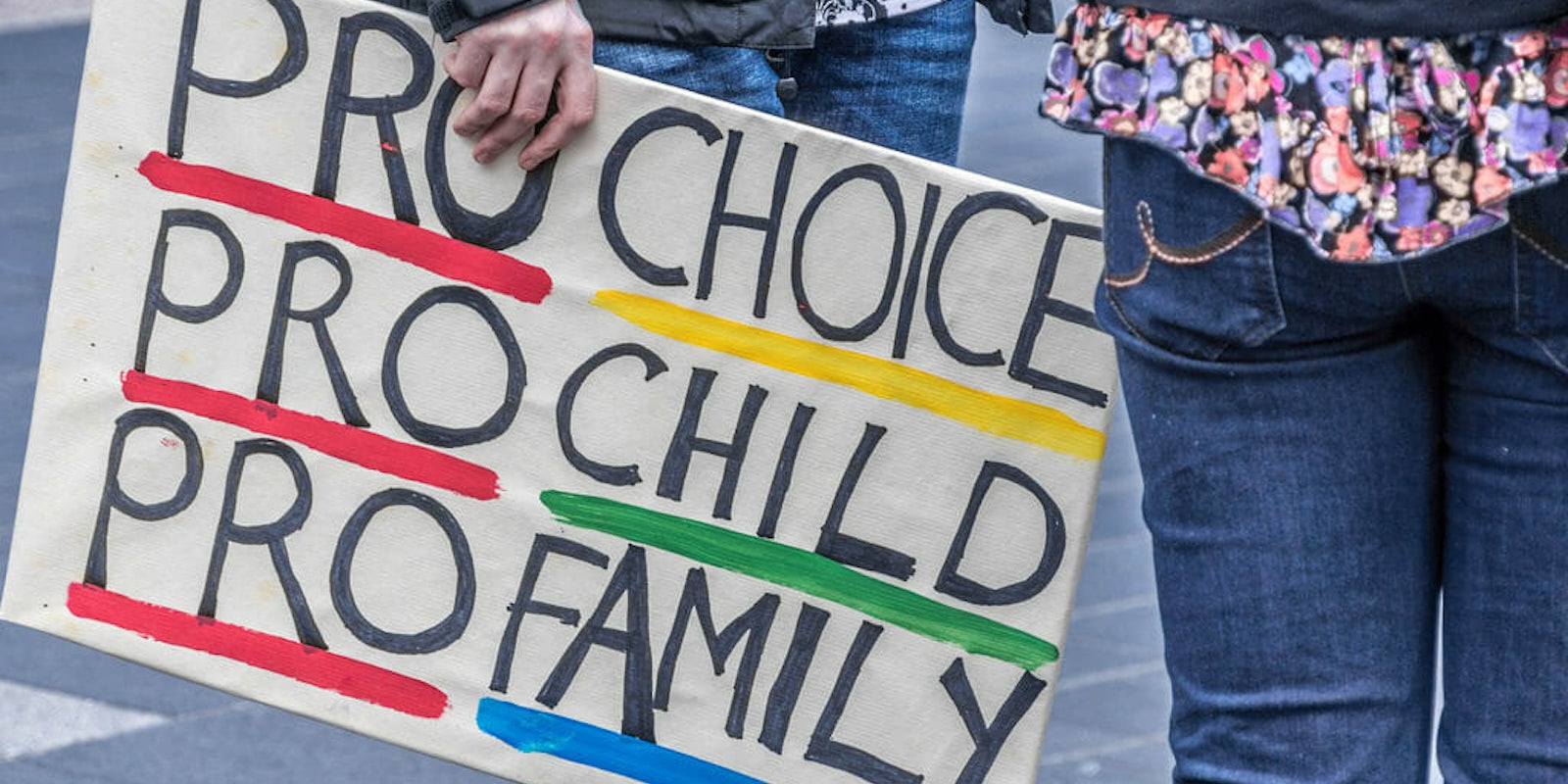Choice. The word feels big and comes up often lately. When faced with my strong-willed 3-and-a-half-year-old son, I’ve learned to give him only two choices or else I’d lose my mind. On a larger scale, I’m considering leaving a career I’ve pursued for over two decades and whether or not to add to our family. Such choices are par for the course as we grow and enter new phases in our lives.
But more significantly, I’ve been thinking about the right to choose in the debate over abortion, which is not only threatened under the Trump administration, but also often misunderstood. The nuances that can go into making a choice to end a pregnancy are often unseen, unspoken, and never casual.
Unfortunately, my husband and I were faced with this choice. Twice. We terminated two very wanted pregnancies. To put it bluntly, I’ve had two abortions.
And as our government tries to strip us of our reproductive rights, I am reminded how lucky I am to have the financial means and to live in a state where laws didn’t prevent me from the choices I made. My abortions left me heartbroken, changed, and grief-stricken—that is indisputable. But everyone should be granted those choices. Those are choices I’d still make today.
. . .
It’d be easy to peg me as your typical pro-choice advocate. I grew up in a liberal household. Feminism was at the core of my progressive private Los Angeles high school education. I went to a super hippie-dippy college where grades “were for eggs, not people.” But while I was taught to think critically about various perspectives, I was primarily surrounded by politically and socially like-minded individuals. To be honest, I never questioned whether I was pro-choice. I just was.

And then I visited a Body Worlds exhibit. This particular show featured skeletal muscles, nervous systems, and healthy and diseased organs to demonstrate the complexity of the human body. It also included a wall of 42 embryo and fetuses preserved in a glass case.
These embryos and fetuses were humanized by Body Worlds. I saw their form and I saw their potential. I saw them as life. (Not so dissimilarly as I saw the meat that I no longer ate when I became a vegetarian 10 years prior.) I remember very clearly, standing over a nine-week embryo in a glass case thinking that I believed in choice, but couldn’t imagine making such a choice.
Fast forward 10 years.
I became pregnant in the summer of 2011. In September, I went in for the routine 13-week NT scan, the ultrasound that assesses your baby’s risk of having chromosomal abnormalities. That day, we found out that our baby’s nuchal fold thickness was outside of the normal range.
We sat with the genetic counselor as we gave our histories (nothing outside of the ordinary) and was given a primer on statistics and chromosomes and karyotypes and various horrifying conditions. At that point, we still didn’t know exactly what it all meant for our child.
As we drove home, my husband, through his stifled tears, said to me, “We can’t think of it as a baby.” I remember feeling aggressively defensive at my husband’s reality. I had stared at the doctor’s screen and saw a body. I had stared at my belly and saw it swollen. Of course, “it” was a baby. That was never a question for me.
Test results confirmed that our baby had a significant chance of having some kind of severe abnormality that could be fatal or would likely cause him to suffer. We consulted doctors, got second opinions, and endured more testing. We were candidly, though not casually, advised by doctors to terminate and try again. And at 14 weeks, that’s what we did. We made our choice.
I grieved, I processed, I sat on the couch in therapy and tried to find meaning in my experience. I planted a letter in an olive tree that I had written to our son, explaining to him why we made our decision, and that it was ultimately a decision made out of love.
I became pregnant again, at the beginning of 2012. This baby’s due date was exactly one year after we terminated the previous pregnancy. I found solace in that kind of synchronicity.
But of course, when I went to my routine 13-week NT scan, I was still anxious.
As I lay on the exam bed, facing a flatscreen monitor with just my name and my estimated due date, the technician asked me, “Would you like me to turn the monitor off after you confirm the information is correct?”
She was asking if I wanted to see my baby. Without hesitation, I told her to leave it on. I did not take my eyes off him. Here was my baby alive and living inside of me.
Soon, though, my husband and I would be faced with the same godawful, painful decision that we had made just months before.
This time around, my baby’s NT scan showed that his nuchal fold thickness measured twice the normal size, putting his life at even more risk than our first. My husband and I searched for a medical explanation or any scientific data that could give us an understanding as to why this happened to us not once, but twice. I scoured medical journal articles and reached what felt like the end of the internet looking for affirmations that I could carry my baby to term and not feel like I was putting my child at a significantly abnormal great risk by bringing him into the world.
We sat with the facts, the data, the expert opinions as well as second and third and fourth opinions. I had a CVS, a microarray, a full counsel on recessive testing. We had ultrasounds with specialists at both Cedars-Sinai and UCLA. We reached out to various genetic and prenatal and neonatal specialists. We made it our job to find an answer.
Despite the extensive research on my pregnancies and all of the testing, every doctor we saw was at a loss to explain why this developed with our babies twice and couldn’t come up with anything beyond compassionately telling us it was “two strokes of bad luck.”
We made our choice. Again.
. . .
I think about what our story would have looked like under different circumstances. In another state. With abortion restrictions. With fewer means. Fewer resources. What that trajectory could have looked like in a parallel universe. And it makes me realize that while others might not agree with our choice—and I certainly can understand why some do not—it was our choice to make, not our government’s. It was philosophical, it was personal, and it was ours.
The Oklahoma House of Representatives passed a bill in March that would ban all abortions based on genetic abnormalities. In other words, Oklahoma legislators believe that the agonizing choice that my husband and I made as a couple, both times, should have been theirs to make. They’d get to make this choice for us even though they would do nothing to support the aftermath of that decision: setting aside funding for his medical care, holding our hands while he underwent a lifetime of treatments, alleviating our pain if he died not long after birth.
In Kentucky, there is only one abortion clinic left in the state. One in 40,400 square miles, and the governor just tried to close it. In that scenario, I think about the big-picture trajectory again: If my husband and I lived in Kentucky and we didn’t have a car or have the funds to get to the closest clinic and subsequently had a child with severe and costly life threatening medical issues—a child whom may or may not have been even able to survive after being born—where would we all be now?
But in what could be the most damaging legislation given my situation, the Texas Senate just passed two obscenely restrictive bills: One outlawing dilation and evacuation (D&E) procedures, the safest and most effective abortion procedure for women in their second trimester and what doctors used to terminate my second pregnancy; and another called the “wrongful birth” bill that would make it legally OK for doctors to lie to their patients about fetal abnormalities so they don’t get an abortion. Yes, doctors could make the choice to withhold my baby’s health issues from my husband and me, while we went on in ignorance, unable to have a choice in the future of our family.
The list of laws and states and circumstances that hinder choice goes on and on.

While it may seem like what the Republican Party wants to do first and foremost with such restrictive legislation is prevent women from getting abortions, that motive is only secondary. Many studies have shown that women aren’t going to stop choosing to have abortions under strict laws—they’ll find other, unsafe means to terminate their pregnancies that could put their own lives in danger. At its core, these laws are about controlling women and perpetuating feelings of shame and guilt for making choices over their own bodies.
Women have long lived with the burdens of shame; nevertheless, we have persisted. We do not shut down after making the choice to have an abortion. We do not go through with the procedure and never feel again. I have never felt so much pain, anger, sadness, grief, and confusion as I did after choosing to end my pregnancies.
Worse than the pain I felt in their absence, though, would have been not getting to make that choice at all. And to clarify: I understand why others would not make the same choice. But being forced into a life based on a doctor’s whim or a legislator’s personal ideology, being robbed of making the best personal choice for my family, would have been a pain I could not endure.
. . .
After that 13-week appointment, I decided to make the most of each day with my son while he was still in my body. We went to the beach. I showed him the ocean and the sand. We ate Indian food, Italian food, Mexican food, Mediterranean food. I read to him. I talked to him. I sang to him. I wrote him letters daily. We listened to a lot of Florence and the Machine. I explained everything that was happening to us as best as I could, as we went into each ultrasound appointment.
After considering and reconsidering all of the information we had collected over five weeks, we made the decision to go in for a D&E the day before my 35th birthday. He was 18 weeks. I woke up on my birthday longing for him and missing him terribly.
While my husband and I grieved together, I felt oddly alone in my experience. Simply put, there was a literal void inside of me. Unlike my husband, I had pregnancy weight gain and pain and cramping and bleeding and hormonal mood swings that were constant visceral reminders of my baby whose life we chose to end. And so I took the pain pills prescribed with wine every night as I watched countless episodes of TLC’s What Not to Wear to escape all the pain that was too hard to feel.
Because he was a baby, my baby, we had him cremated. Until we came up with the right spot to place his ashes, I carried him around with me. Some might think it weird or dark or sick, but I couldn’t fathom leaving him home alone, and so he came with me in my purse to my appointments, my errands, and my work. We eventually found his spot.
My husband and I eventually tried again seven months later. I quickly became pregnant and gave birth to our son in August 2013.
I would be lying if I said I did not often see his two brothers when I look at him. All three are part of my fabric—our son is here because of them. And one day, I plan on telling him about his brothers and our journey. A journey and a family we wouldn’t have without choice.


